From the vantage point of a window in an insane asylum, Vincent van Gogh painted one of the most noted and valued artistic works in human history. It was the summer of 1889. With his post-impressionist paint strokes, Starry Night depicts a night sky before sunrise that undulates, flows and is never settled. Scientific discoveries are revealing a Cosmos with such characteristics.
Since Vincent’s time, artists and scientists have taken their respective paths to convey and understand the natural world. The latest released images taken by the European Planck Space Telescope reveals new exquisite details of our Universe that begin to touch upon the paint strokes of the great master and at the same time looks back nearly to the beginning of time. Since Van Gogh – the passage of 125 years – scientists have constructed a progressively intricate and incredible description of the Universe.

The path from Van Gogh to the Planck Telescope imagery is indirect, an abstraction akin to the impressionism of van Gogh’s era. Impressionists in the 1800s showed us that the human mind could interpret and imagine the world beyond the limitations of our five senses. Furthermore, optics since the time of Galileo had begun to extend the capability of our senses.
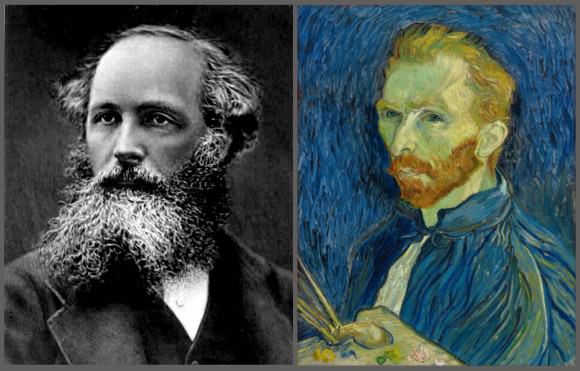
Mathematics is perhaps the greatest form of abstraction of our vision of the World, the Cosmos. The path of science from the era of van Gogh began with his contemporary, James Clerk Maxwell who owes inspiration from the experimentalist Michael Faraday. The Maxwell equations mathematically define the nature of electricity and magnetism. Since Maxwell, electricity, magnetism and light have been intertwined. His equations are now a derivative of a more universal equation – the Standard Model of the Universe. The accompanying Universe Today article by Ramin Skibba describes in more detail the new findings by Planck Mission scientists and its impact on the Standard Model.
The work of Maxwell and experimentalists such as Faraday, Michelson and Morley built an overwhelming body of knowledge upon which Albert Einstein was able to write his papers of 1905, his miracle year (Annus mirabilis). His theories of the Universe have been interpreted, verified time and again and lead directly to the Universe studied by scientists employing the Planck Telescope.
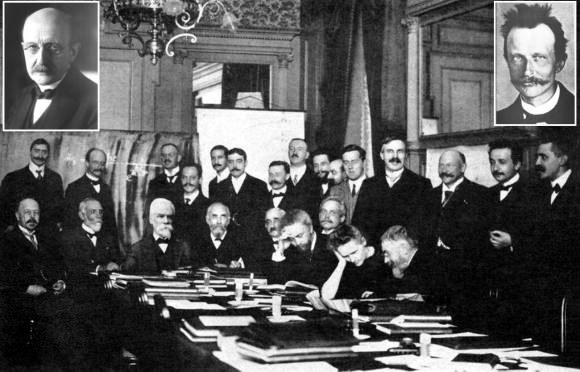
In 1908, the German physicist Max Planck, for whom the ESA telescope is named, recognized the importance of Einstein’s work and finally invited him to Berlin and away from the obscurity of a patent office in Bern, Switzerland.
As Einstein spent a decade to complete his greatest work, the General Theory of Relativity, astronomers began to apply more powerful tools to their trade. Edwin Hubble, born in the year van Gogh painted Starry Night, began to observe the night sky with the most powerful telescope in the World, the Mt Wilson 100 inch Hooker Telescope. In the 1920s, Hubble discovered that the Milky Way was not the whole Universe but rather an island universe, one amongst billions of galaxies. His observations revealed that the Milky Way was a spiral galaxy of a form similar to neighboring galaxies, for example, M31, the Andromeda Galaxy.
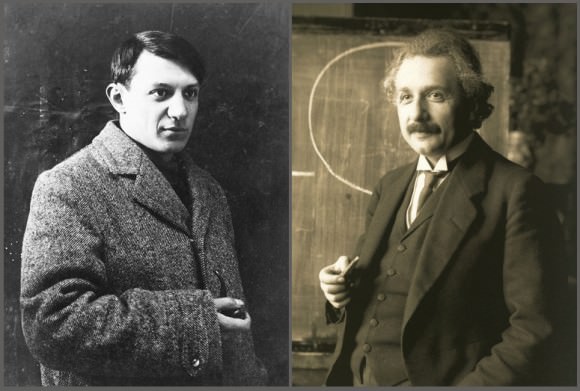
Einstein’s equations and Picasso’s abstraction created another rush of discovery and expressionism that propel us for another 50 years. Their influence continues to impact our lives today.
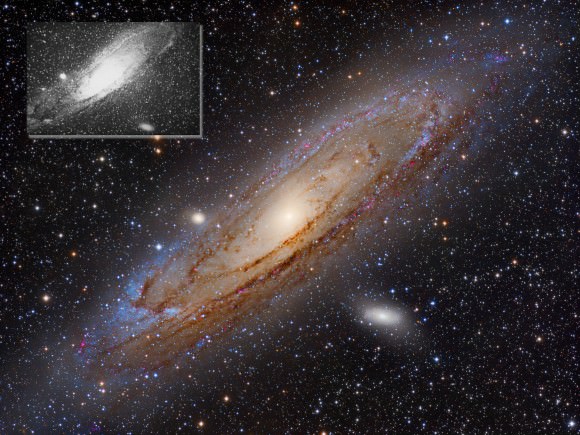
Telescopes of Hubble’s era reached their peak with the Palomar 200 inch telescope, four times the light gathering power of Mount Wilson’s. Astronomy had to await the development of modern electronics. Improvements in photographic techniques would pale in comparison to what was to come.
The development of electronics was accelerated by the pressures placed upon opposing forces during World War II. Karl Jansky developed radio astronomy in the 1930s which benefited from research that followed during the war years. Jansky detected the radio signature of the Milky Way. As Maxwell and others imagined, astronomy began to expand beyond just visible light – into the infrared and radio waves. Discovery of the Cosmic Microwave Background (CMB) in 1964 by Arno Penzias and Robert Wilson is arguably the greatest discovery from observations in the radio wave (and microwave) region of the electromagnetic spectrum.
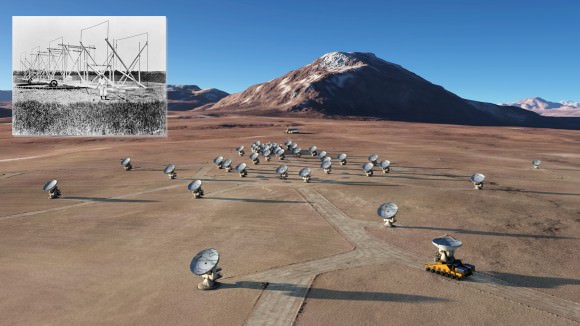
Analog electronics could augment photographic studies. Vacuum tubes led to photo-multiplier tubes that could count photons and measure more accurately the dynamics of stars and the spectral imagery of planets, nebulas and whole galaxies. Then in the 1947, three physicists at Bell Labs , John Bardeen, Walter Brattain, and William Shockley created the transistor that continues to transform the World today.
For astronomy and our image of the Universe, it meant more acute imagery of the Universe and imagery spanning across the whole electromagnetic spectrum. Infrared Astronomy developed slowly beginning in the 1800s but it was solid state electronics in the 1960s when it came of age. Microwave or Millimeter Radio Astronomy required a marriage of radio astronomy and solid state electronics. The first practical millimeter wave telescope began operations in 1980 at Kitt Peak Observatory.
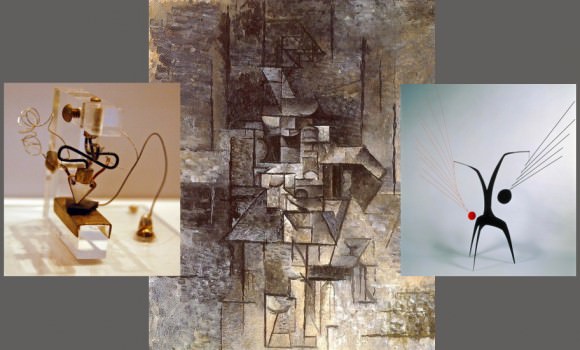
With further improvements in solid state electronics and development of extremely accurate timing devices and development of low-temperature solid state electronics, astronomy has reached the present day. With modern rocketry, sensitive devices such as the Hubble and Planck Space Telescopes have been lofted into orbit and above the opaque atmosphere surrounding the Earth.
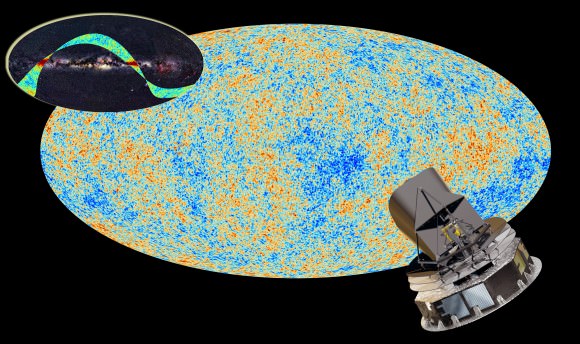
Astronomers and physicists now probe the Universe across the whole electromagnetic spectrum generating terabytes of data and abstractions of the raw data allow us to look out into the Universe with effectively a sixth sense, that which is given to us by 21st century technology. What a remarkable coincidence that the observations of our best telescopes peering through hundreds of thousands of light years, even more so, back 13.8 billion years to the beginning of time, reveal images of the Universe that are not unlike the brilliant and beautiful paintings of a human with a mind that gave him no choice but to see the world differently.
Now 125 years later, this sixth sense forces us to see the World in a similar light. Peer up into the sky and you can imagine the planetary systems revolving around nearly every star, swirling clouds of spiral galaxies, one even larger in the sky than our Moon, and waves of magnetic fields everywhere across the starry night.
Consider what the Planck Mission is revealing, questions it is answering and new ones it is raising – It Turns Out Primordial Gravitational Waves Weren’t Found.


I love this Tim. Art in parallel with the spectacular developments in physics and astronomy. Great idea and nicely done with a grand sweep.
Thanks Bob. Judy Schmidt created the morph. Just provided the two frames and the idea, she returned the morphing in fine form. One’s appreciation is raised when one dapples with a piece of great art like van Gogh’s and consider his circumstances. Maybe one day soon, we will have someone of the stature of a van Gogh or Picasso transform Hubble, Planck, Cassini, all the great space imagery into art and abstractions. There are artists trying.
Note that there were others that saw the similarity. Judy informed me that one comment attached to the Astronomy Picture of the Day (APOD) of the Planck image (1/27), mentioned it.
Of course they weren’t found. The universe is an electrical phenomenon. Electric forces are 10 to 39th times more powerful than gravity. Gravity is but a remnant of the ashes left over from powerful electromagnetic events which govern the formation of matter, planets, stars and galaxies.
As new technology yields more and more data daily the obvious failure of the gravity based paradigms becomes more and more clear. Yet cosmologists run to the mathematicians to find ways to salvage the sinking ship. Their creations started with black holes then to neutron stars then to dark matter/energy and finally to accretion disks. One bad theory has given rise to so many more and none of them can be observed or confirmed. Their view of the universe is illogical and requires the breakdown of the laws of physics. It just keeps getting weirder and weirder. Can anyone spell the word PLASMA????
Once a hard look is taken at the latest electrical models put forth by plasma physicists then perhaps science can return to cosmology. For now though all observable data says it’s science fiction
Electricity is more powerful than gravity AT CLOSE RANGES and then SHARPLY TAPERS OFF….. Take your pseudo-nonsense back to fantasy land! Can anyone spell the phrase, “DELUSIONAL HACK NONSENSE PROPAGATED BY A SMALL HANDFUL OF FRINGE IDIOTS OUT SIMPLY TO HAWK THEIR WARES”?? If gravity is so wrong, then how do the teams that plot courses using …erm… GRAVITY and it’s corresponding equations actually get their probes to their destinations? We can actually see the effects of gravity and accretion discs and super-massive black holes by studying the movements of the stars in the center of the Milky Way, for instance as they orbit the SMBH there and guess what….? The observations match the math almost flawlessly. Or how about gravitational lensing? Einstein predicted it and we now observe it’s effects on a regular basis and our observations match his predictions almost flawlessly, which he made close to a century ago using….. math and what’s become the standard model. These are only two of countless examples of how a gravity based universal theory WORKS. If you’d take a course or two in REAL science, you’d know that observations DO follow the math. Give up on those scant few sites that spread this out-moded in the 60’s dead end physics silliness… Oh ya, you know more about this than tens thousands of deeply studied people who over the past hundred years have come up with the standard model….. LMFAO!
Fantastic multidisciplinar article!
Love the gif.
I too noticed the similarity between Planck’s image and “Starry Night” and posted it on APOD a couple of days ago. ref: http://asterisk.apod.com/viewtopic.php?t=34394#p238997 . Independent sui genesis
Rem – yes! We and a bunch of unspoken others. Glad you like it.
Art has always benefited from technology and technology from the works of artists of vision. My grandfather and grandmother met each other in an art school on Boston. He was not particularly an artist of vision. He taught English and that very un-impressionistic form of art called drafting at MIT for many of the early 20th century years that the math and observable science of Einstein and the founders of quantum mechanics were improving their understandings. The great depression, and perhaps his dogged pursuit of representational art left him wandering from job to job despite his Phd.
I mention this because it truly does take a sense of vision beyond the ordinary in either intellectual pursuit. A bit of madness sometimes helps as well. George Ellery Hale and Van Gogh are but two of the disparate souls who both suffered for their obsessions, all the better for us to gain from it.
Thank you for sharing that. Ray Kurzweil has a couple of books – “Age of Intelligent Machines”, “Age of Spiritual Machines”. I haven’t read either. What will become of humans after the singularity? Technological changes impacting the economy effected the path of your grandparents; also for us. The big question is how us humans will fit into the arts and sciences after the singularity.
In one respect, the singularity is already upon us. Intelligence didn’t necessarily spring up just one day or even year for humans; perhaps the same for A.I. The internet can be considered as one phase of evolution to the singularity. Humans, collectively function as the artificial mind of the internet. This artificial mind has both rational thought and emotion. The internet’s behavior is a facsimile of what an unleashed A.I. with all the characteristics of humans could do.
The concern being expressed, for example, by Musk, Gates and others for the “Singularity”. The risk posed by A.I., in my opinion, is if the A.I. we create has an emotional behavior. A prime reason cultures have subjugated and destroyed other cultures has a root in self-preservation which I think is fundamental to our emotions. If you want to determine what we need to do now and after the “Singularity”, then Kurzweil and Singularity University should be staffing a slew of sociologists – as many as the entrepreneurs and technologists roaming around Moffett Field and off-site.
To return to art and science, intelligent machines will continue to defeat us at continually more of our games. They will be able to tell us how to operate our economies, design our social programs and so forth. What if, they become spiritual and in so doing express themselves in the arts? Will we see our final defeat by A.I.? If you consider, the subjugation of say, the American Indians by Europeans, it was first of all a technological defeat. The survival of American Indians has rested on their revival of their culture. This will be the final challenge of humankind – survival and even strengthening of our culture(s) after the singluarity. The challenge is here already. Its also more complicated in that we will splinter both by location and biologically and the evolution of humans after A.I. will be manifold.